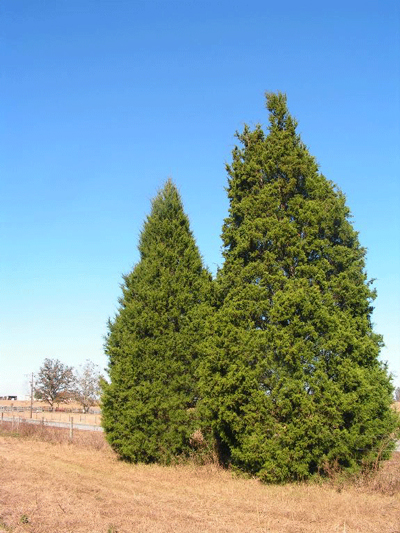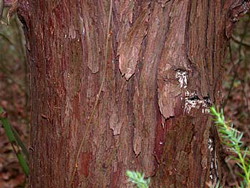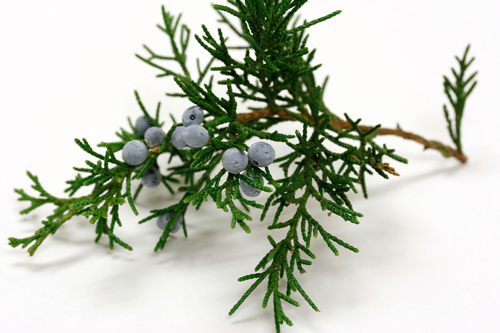
The Southern Redcedar, also known as the “Sand-Cedar” (Juniperous siliciola, meaning “growing in sand,” or Juniperus virginiana) is an aromatic evergreen that rises up to 50 feet and can have widths of up to two feet. It is favored as a decorative tree, a windbreaker when planted in rows, and as a Christmas tree.
The tree’s dark-green, scaly foliage is droopy, forming four-angled twigs that grow tiny dark blue berry-like cones of about 5 millimeters in diameter (a quarter inch or so). The bark is brown to dark brown, shredding off in fibers like a woody, well-cooked roast.
Because it is resistant to salt spray, the tree grows in most of central and northern Florida, including the Panhandle, and along the coasts of every state south of the Mason-Dixon Line: Georgia, South Carolina, Virginia, Maryland and Delaware, as well as Louisiana and east Texas. It grows in sand dunes and brackish marshes and other sandy soils.
The tree is native to American soils. Its most active growth period is in spring and summer, though its berry-like fruit blooms in spring and continues through fall. It grows relatively fast.






























Leave a Reply